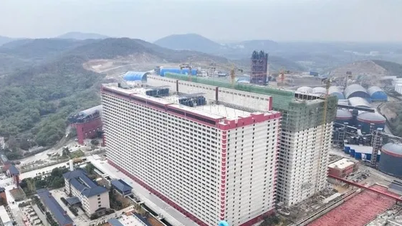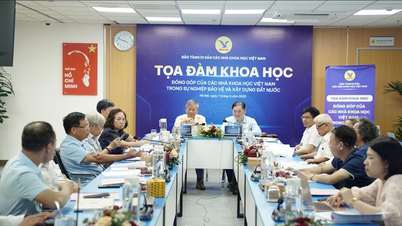Specifically, in the document of the Vietnam Real Estate Association (VNREA), many important contents related to the issue of procedures and contents of determining land prices according to the surplus method have been mentioned, such as the proposal to amend points a and b, Clause 2, Article 5d.
Specifically at point a, the total development revenue of the land plot or land area is determined based on the estimated transfer price, rental price, and fluctuation of transfer price and rental price during the project implementation period based on the comparison method and considering other revenue-generating factors including sales time, sales rate, and occupancy rate.
At point b, the application of the comparison method to determine total development revenue must ensure the conditions of comparison with land plots and land areas that have been invested in technical infrastructure or invested in construction according to approved detailed construction planning.
Regarding Point d, Clause 2, Article 5d, VNREA proposes to amend and supplement as follows: "The Provincial People's Committee, based on the actual situation in the locality, the scale and nature of each project, shall specifically stipulate the construction time, construction progress, advertising and sales costs; the investor's profit shall take into account the business risk factor and capital cost, including equity and borrowed capital".

The residual method is considered essential in land valuation.
Also in Article 5d, VNREA proposes to amend points a and b, clause 3. Point a is proposed to be amended to “Construction investment costs include: Costs of construction of technical infrastructure, social infrastructure, housing construction, other construction works; equipment costs; construction investment consulting costs; project management costs, other costs arising during the investment implementation process. Construction investment costs take into account the price inflation factor during the construction investment period”.
With point b, the proposed amendment is: “Business costs include: Advertising and sales costs; investor profits taking into account business risks and capital costs, including equity and borrowed capital, and investor management costs during the sales and business process. Determining advertising and sales costs is calculated as a percentage of revenue in accordance with the local average. Investor profits take into account business risks and capital costs, including equity and borrowed capital, calculated as a percentage of the total investment costs for construction of works on land and technical infrastructure, and land use fees and land rent payable”.
In addition, VNREA also proposed many other contents of Decree 44 such as the method of applying land price adjustment coefficient; factors affecting land price; information for applying the income method to agricultural land; procedures and contents of determining land price according to the land price adjustment coefficient method...
Regarding Decree 44, the Ministry of Natural Resources and Environment has recently added the surplus method to the latest draft amendment.
Accordingly, there are currently five land valuation methods including direct comparison, deduction, income, surplus, and land price adjustment coefficient. In the draft amendment and supplement to a number of articles of this decree in July, the Ministry of Natural Resources and Environment removed the two surplus and deduction methods.
In the latest draft just published for comments, the Ministry of Natural Resources and Environment has added the surplus method in addition to three other methods: comparison, income and land price adjustment coefficient.
The surplus method is to take the (assumed) revenue of the real estate project minus the estimated cost, from which the management agency calculates the land tax that the enterprise must pay. However, the surplus is the main method applied by nearly 90% of real estate projects to calculate land use fees from 2014 to present.
The draft amendment not applying the surplus method is unreasonable. The proposal to remove this method also makes many experts worry that it will contribute to further negative impacts on the real estate market such as causing a blockage in the supply of new projects, making it difficult for businesses as well as reducing housing prices.
Source






















































































![[OCOP REVIEW] Tu Duyen Syrup - The essence of herbs from the mountains and forests of Nhu Thanh](https://vphoto.vietnam.vn/thumb/402x226/vietnam/resource/IMAGE/2025/6/5/58ca32fce4ec44039e444fbfae7e75ec)







Comment (0)